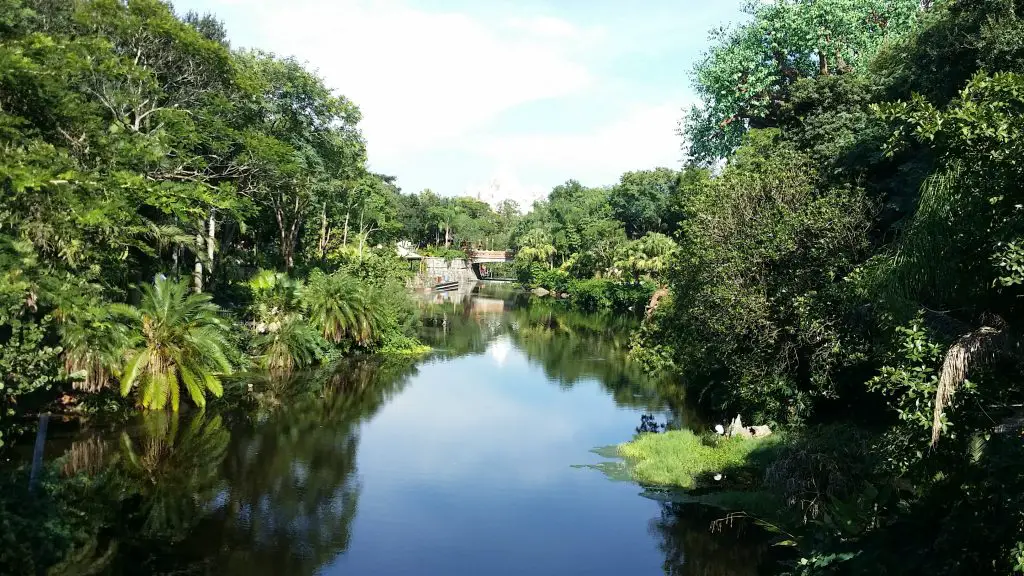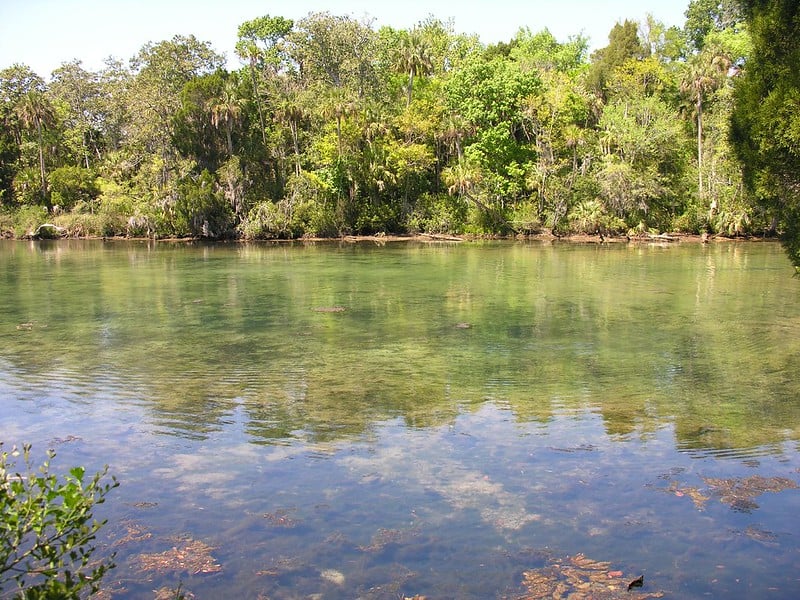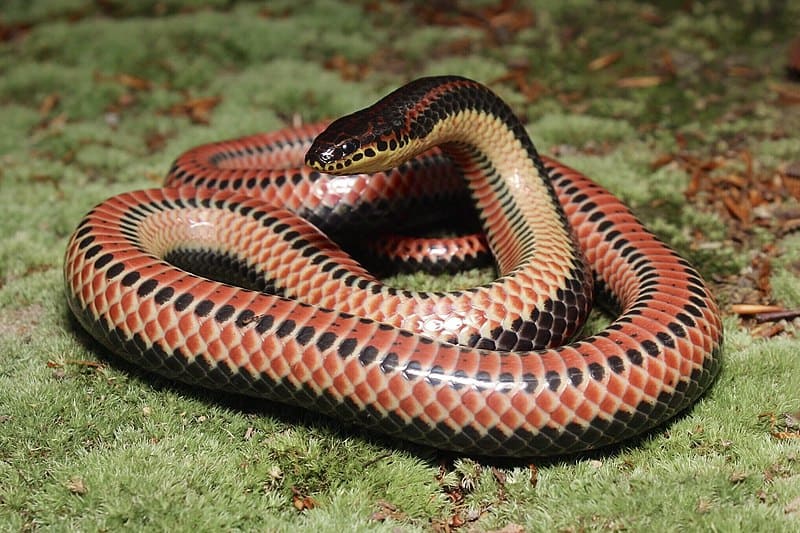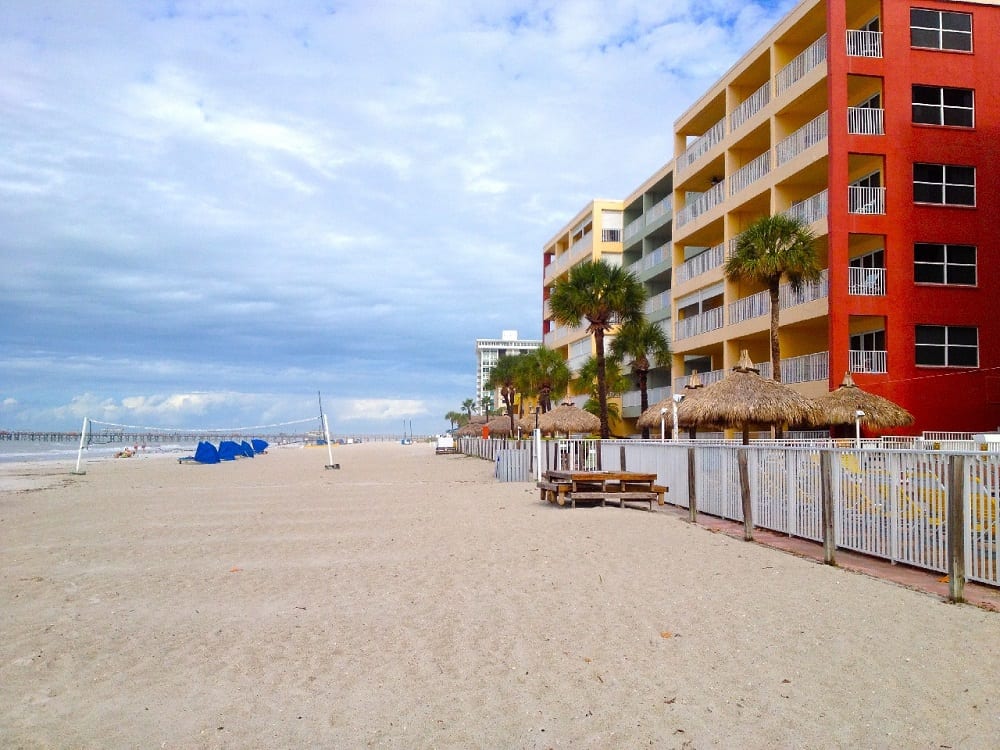Saltwater rivers in Florida are a nature-lovers paradise – and a fisherman’s dream! With its warm sunshine, miles of pristine coastline, and the exotic wildlife that inhabits the area, it’s no wonder why people flock to the Sunshine State.
But what many don’t know is that there are also some beautiful saltwater rivers nestled along the shoreline waiting to be explored.
We live in a state with many rivers and streams. Some are freshwater, while others are saltwater.
From the St. Johns River to the Apalachicola River, to those lesser-known gems like the Peace River, Florida is a true paradise for all things saltwater related.
1. St. John’s River
One of the longest rivers in the state of Florida is the St. Johns River. It is also the most significant river for recreational and commercial purposes. It is 310 miles long and winds through twelve counties.
If you’re looking for a great place to go kayaking or fishing, this is the river for you.
Despite its name, the St. Johns River flows north to south, against the normal flow of rivers. This unique river has a slight slope and begins in Saint John’s Marsh, where it gradually lowers itself until it meets the Atlantic Ocean.
While it may not be the prettiest river, it is a great place to fish.
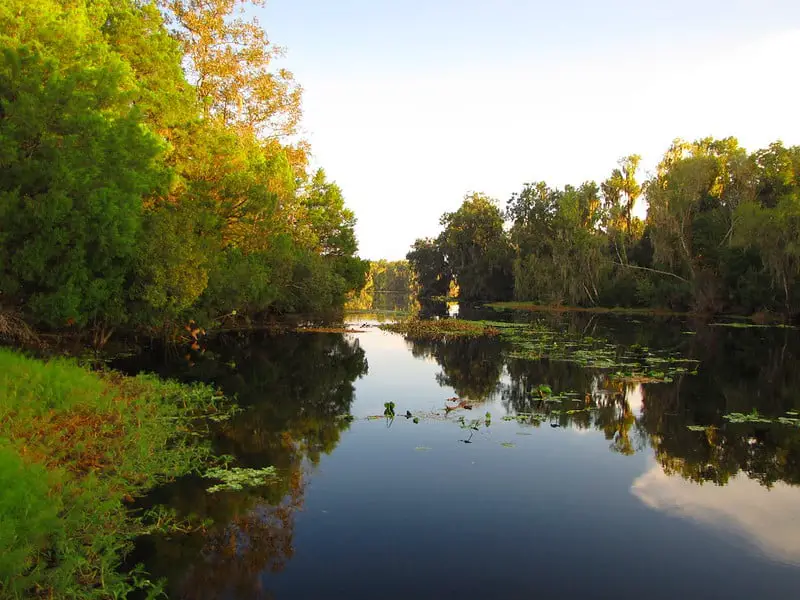
The Saint Johns River runs through 12 counties in northeast Florida. At its widest, it is almost three miles wide. The river is divided into three basins or watersheds.
The Lower Basin, the longest, covers more than two thousand square miles, and the Upper Basin is slightly smaller, at about 2,600 square miles. The river also flows through a few lakes, including Lake George in the Ocala National Forest.
There are a number of plant and animal species that can be found in the St. Johns River. Among them are manatees, largemouth bass, river otters, waterfowl, and rhesus monkeys.
There are also a variety of reptiles that can be found in the area.
DeLand is home to Stetson College. If you’re looking for great fishing and boating, the area west of the college has several marinas and restaurants.
There’s also a town called DeBary that is home to Frederick de Bary, a New York wine merchant. His lodge is now a museum.
2. Caloosahatchee River
If you are looking for an adventure in a beautiful river, then the Caloosahatchee River in Florida may be the perfect place for you. The river is filled with freshwater year-round thanks to the groundwater flow and springs.
Take an eco-friendly boat tour and see the wildlife up close. You can also go fishing and enjoy the views of the river from a pier.
The Caloosahatchee River in Florida begins at Lake Okeechobee and flows west to the Gulf of Mexico. The river forms an estuary in the lower 25 miles (40 km) and widens as it approaches the Gulf of Mexico.
The river is protected by San Carlos Bay and Sanibel Island on its way to the Gulf of Mexico. It has become a vital link in the inland waterways system of south Florida.
The Caloosahatchee River flows through several historic towns along the river. One of them is LaBelle, where the Swamp Cabbage Festival has been held for 50 years.
It is believed that people have traveled across the Caloosahatchee River since the days of the Calusa tribe. West of Alva, the river changes direction, making Fort Myers the largest city along the river.
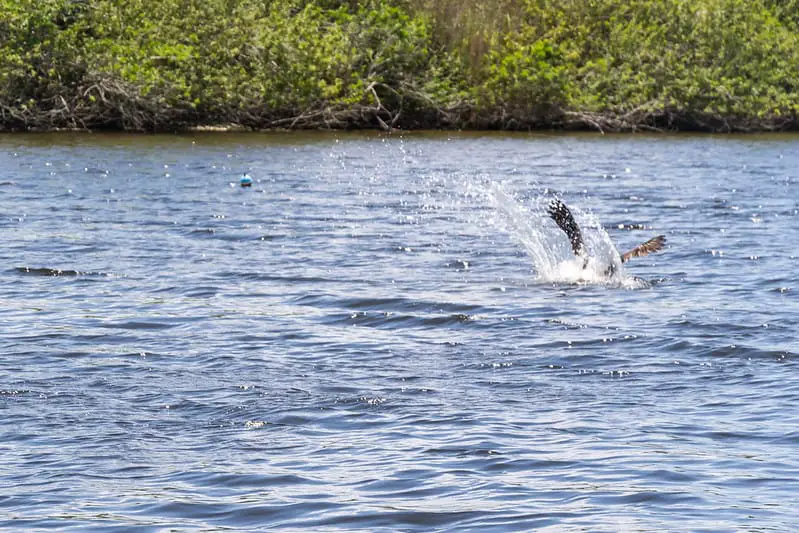
In the late nineteenth century, the Caloosahatchee River underwent extensive changes. It used to be a crooked, shallow river, but was widened into a regulated waterway and connected to Lake Okeechobee.
The new connection has altered the river’s hydrology. In the 1960s, the state of Florida purchased the lower Caloosahatchee River and has been leasing it for public recreational purposes.
The Caloosahatchee River is home to numerous species of fish. Those who are interested in catching a big fish can try baitcasting or using a rod and reel.
While the river is largely developed and crowded with homes, it is also a fantastic fishing spot.
Earthjustice has filed a lawsuit against the U.S. Army Corps of Engineers, which has violated water protection laws in the Caloosahatchee River.
The river is a public water source, and it has been affected by algae outbreaks for eight of the last 11 years. The algae outbreaks cause respiratory problems and massive fish kills. They also harm a wide variety of wildlife.
3. Hillsborough River
The Hillsborough River is a saltwater river located in Florida. It winds through the city of Tampa before entering the large estuary of Tampa Bay. The Hillsborough River supports a diverse range of aquatic species. These species include red drum, largemouth bass, and common snook.
The Hillsborough River originates in the Green Swamp in Pasco County, Florida, and flows for 60 miles or 97 km through Hillsborough County. There are several nature trails in the area, including the Hillsborough River Trail, which runs for 7 miles. The river was first named by a British official in 1769.
The Earl of Hillsborough, who controlled the pensions of surveyors in East Florida, was the first person to record its location on a map. The Hillsborough River becomes navigable after the Tampa Bay River is channelized in 1910. The river is used as a transportation route.
A significant amount of timber is cut in the watershed. In 1911-1914, Bertha Potter Palmer buys 19,000 acres of land along the Hillsborough River. She later built a lodge and guest houses on the property.
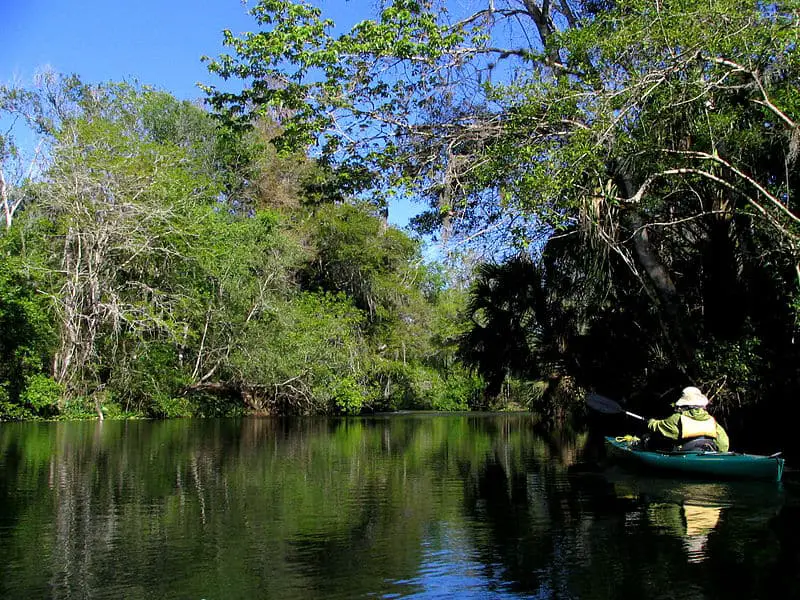
The Hillsborough River empties into Tampa Bay, which is the largest open-water estuary in Florida. An estuary is a partially enclosed body of water where fresh water from rivers and streams mixes with salty seawater.
The mix creates a unique environment for animals.
There are several parks and hiking trails near the Hillsborough River. This river is home to many species of fish, birds, and plants. This area is also a popular location for floaters.
Whether you’re a novice or an expert, the Hillsborough River is a great place to relax with the family.
Anglers can try fly fishing and jigging techniques on the Hillsborough. Many fish in Hillsborough prefer structures along the river banks.
Some of these structures include overhanging branches and sunken trees. These structures provide protection from strong currents and allow for more fishing. Rock piles also provide good fishing locations. The downstream side of rock piles is also a good place for fish to rest.
The Hillsborough River is home to alligators. Anglers should wear headlamps to avoid being attacked by them. During daylight hours, alligators are more likely to be spotted than in the evening.
Their deep red eyes make them easily recognizable. Normally, alligators are not aggressive but are on the defensive.
4. Ichetucknee River
While tubing on the Ichetucknee River in Central Florida can be fun, keep in mind that the river can get very crowded. If you visit during the off-season, the river is much less crowded.
You can enjoy more wildlife and fewer crowds.
The spring-fed water of the Ichetucknee River is 72 degrees and crystal clear. Thousands of visitors visit the area every year, but the river is not for everyone.
Be sure to read up on the rules and regulations before going tubing. It is a wonderful way to spend a day.
The Ichetucknee River is home to dozens of turtles. There are several types of freshwater turtles found in this area. The river’s water clarity makes it ideal for fishing.
It also attracts schools of fish, including manatees and alligator gar.
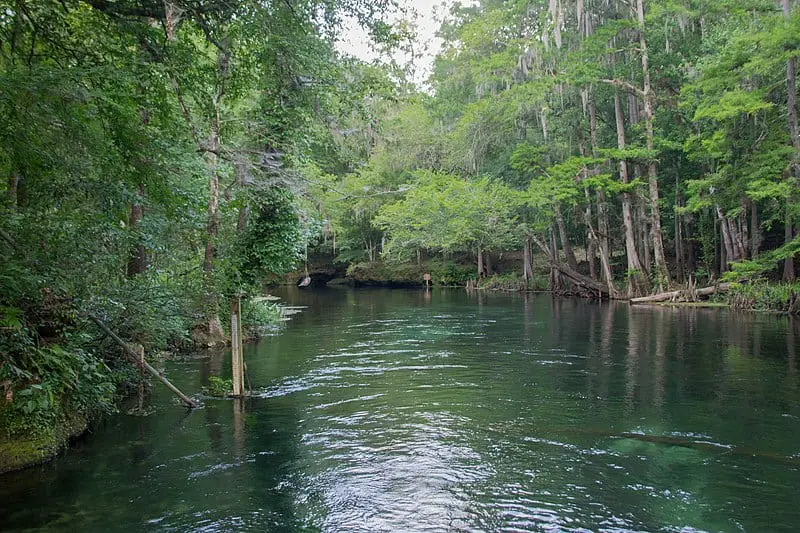
The Ichetucknee River is fed by natural springs and is a popular destination for Florida residents and campers alike. The springs were once used by early Florida Indians.
In the 1600s, a Spanish Mission built the Mission de San Martin de Timucua, and the river became an oasis for travelers and Native Americans.
A quaint state park in Florida, Ichetucknee Springs State Park is surrounded by lush vegetation and crystal-clear waters. It is also home to some of the state’s best tubing.
Families can also hike and camp at the park. While tubing is a popular activity, the park is also home to a large number of alligators.
The upper 3.5 miles of the Ichetucknee River are protected as a state park. While it is possible to navigate the river on your own, it is also advisable to take a guided tour to learn more about the area.
The Adventure Outpost, located in High Springs, runs guided tours and offers more information about the area.
The entrance fee for the park is $6 per vehicle. There is a tubing tram, which costs about $5.5 per person. You can rent tubes for $6 to $25 if you do not bring your own.
Small children should wear life vests while tubing. Older children may enjoy swimming. Be aware, though, that the water temperature is cold even during the summer months.
The state of Florida is a paradise for nature lovers and outdoor enthusiasts. From the vast expanse of the Gulf of Mexico to winding freshwater rivers, it’s no surprise that there are many different types of waterways to explore.
One of the lesser-known gems in the Sunshine State is its saltwater rivers!
These unique places provide a spectacular look into the diversity and beauty of the Florida landscape.

